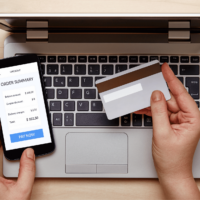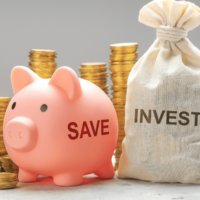Forex Trading Plan
Every trade should have a Trading Plan forex. Businesses have an old saying: if you fail to plan, you plan to fail. If you want to succeed, especially as a trader, follow those words like they are written in stone. Any trader who consistently makes money will tell you that you have two choices: 1) follow a written plan methodically or 2) fail.
Congratulations if you already have a written trading or investment plan, you’re in the minority. To develop a financial market approach or methodology that works, it takes time, effort, and research. Even though there are no guarantees of success, you have eliminated one major roadblock by creating a detailed trading plan.
Disaster Avoidance
If you wish to succeed in trading, you must treat it as a business. Reading a few books, purchasing a charting program, opening a brokerage account, and starting to trade with real money is not a business plan. The trading plan forex should consist of clear signals that are not subject to change while you are in the market, but should be revised after the market closes. Plans can change depending on market conditions and might need to be adjusted as the trader’s skills improve. Traders should write their own trading plans based on their trading styles and goals. Relying on someone else’s plan does not reflect your trading characteristics.
Building the Perfect Master Plan
No two traders are exactly alike, so no two trading plans are the same. Each approach will be influenced by factors like trading style and risk tolerance. Are there any other essential elements of a solid trading plan? Let’s look at 10 of the most important ones:
1. Skill Assessment
Ready to trade? Have you tested your system by paper trading it, and are you confident that it will work in a live trading environment? Will you follow your signals without hesitation? Trading markets involves risk and reward. The real pros prepare and profit from the rest of the crowd who, lacking a plan, generally throw money away after costly mistakes.
2. Mental Preparation
What are your feelings? Did you sleep enough? Do you feel prepared? Take time off from the market if you are not emotionally and psychologically prepared. You will lose your shirt. If you are angry, preoccupied, or otherwise distracted from the task at hand, you are almost certain to do this.
There are many traders who repeat a mantra before they begin their day. Think of one that puts you in the trading zone. Your trading area should also be distraction-free. This is a business and distractions are costly.
3. Set Risk Level
What percentage of your portfolio should you risk on one trade? This depends on your trading style and risk management. The amount of risk in your portfolio can vary, but should probably range between 1% and 5% on any given day.
If you lose that amount at any point during the day, you get out of the market and stay out. If things aren’t going your way, it’s better to take a break and try again later. Understanding forex risk management.
4. Set Goals
Trading Plan forex Set realistic profit targets and risk/reward ratios before entering a trade. What is your minimum acceptable risk and reward? Most traders will not take a trade unless the potential profit is at least three times greater than the risk. As an example, if your stop loss is $1 per share, your profit goal should be $3 per share. Plan weekly, monthly, and annual profit goals, either in dollars or in a percentage of your portfolio.
5. Do Your Homework
Checking what’s going on around the world before the market opens is something you do before the market opens? Does the foreign exchange market look up? What’s the status of S&P 500 index futures before the market opens? It is possible to gauge the mood of the market before it opens by trading index futures because futures contracts are traded 24 hours a day.
When will the economic or earnings data be released? Post a list on the wall in front of you and decide if you want to trade ahead of an important report. Most traders would rather wait until the report is released rather than take unnecessary risks associated with trading during volatile reactions to reports.
Professionals trade based on probabilities. Traders do not gamble. Trading ahead of an important report can be a gamble because it is impossible to predict market reaction.
Also Read – Top 8 Best forex trading platforms Australia – Top 10 Super Forex Trading Chart Patterns: Every Trader Should know, 2022 – Forex Trading For Beginners UK : Everything You Need To Know 2021
6. Trade Preparation
No matter what trading system or program you are using, label major and minor support and resistance levels on the charts, set alerts for entry and exit signals, and ensure that all signals are easily seen or audible.
7. Set Exit Rules
Most traders make the mistake of focusing most of their efforts on looking for buy signals, but neglect to pay attention to when and where to exit. Traders don’t sell if they are down because they don’t want to lose money. You will not succeed as a trader if you cannot accept losses. If your stop is hit, that means you were wrong. Be forgiving.
Even though professional traders lose more trades than they win, they still manage their money to make profits by limiting losses. You should know your exits before you enter a trade. Each trade has at least two possible exits. First of all, what is your stop loss if the trade goes against you? You must write it down.
Your mental stop loss does not count. You should also set a target profit for every trade. You can move your stop loss on the rest of your position to the breakeven point once you reach that point.
8. Set Entry Rules
Exit rules come after entry rules for a reason: Exits are more important than entries. Typically, an entry rule would read: “If signal A fires and the minimum target is three times greater than my stop loss and we are at support, then buy X contracts or shares here.” The system should be complex enough to be effective, but simple enough to facilitate snap decisions. Having 20 conditions you have to meet, many of them subjective, will make it difficult to make trades.
Most trades that occur on major stock exchanges now are generated by computer programs, which might explain why computers are often better traders than people. A computer does not need to think or feel good to make a trade. It simply enters if the conditions are met. They exit a trade when it goes the wrong way or when it reaches a profit target.
When they make a few good trades, they don’t get angry at the market or feel invincible. Their decisions are based on probability, not emotion.
9. Keep Excellent Records
Traders with experience and success keep excellent records, as well. When they win a trade, they want to know why and how. They also want to know the same thing when they lose, so they won’t repeat the same mistakes. Including details such as targets, entry and exit points, support and resistance levels, daily opening range, market open and close for the day, as well as why you made the trade as well as lessons learned.
Keeping your trading records will also allow you to go back in the future and analyze your profits and losses of a particular system, drawdowns (which are amounts lost per trade when using a trading system), average time per trade (which is necessary to determine trade efficiency), and other important aspects. Compare these factors to a buy-and-hold strategy. This is a business, so keep that in mind. Want your business to succeed and be profitable.
10. Analyze Performance
Adding up the profit or loss after each trading day is secondary to knowing why and how. Write your conclusions in your trading journal so you can refer to them later. There will always be losing trades. You want a trading plan that can win over the long run.
The Bottom Line
Trading successfully in practice does not guarantee success when you trade real money. That’s when emotions kick in. Successful practice trading does give traders confidence in the system they are using if the system is generating positive results in a practice environment. Choosing a system is less important than developing the skill to make trades without second-guessing or doubting your decision. You need to have confidence.
A trade can never guarantee a profit. Traders’ chances of winning and losing depend on their skill and system of trading. You cannot win without losing. Trading professionals understand before they enter a trade that the odds are in their favor or they wouldn’t be there.
A trader who lets profits ride and cuts losses short will win the war even if they lose some battles. Traders and investors they do the opposite, which is why they don’t consistently make money. Traders who consistently win treat trading as a business. There is no guarantee that you will make money, but having a plan is crucial if you want to be consistent and survive in the game of trading.
Also Read – Top 8 Best forex trading platforms Australia – Top 10 Super Forex Trading Chart Patterns: Every Trader Should know, 2022 – Forex Trading For Beginners UK : Everything You Need To Know 2021














